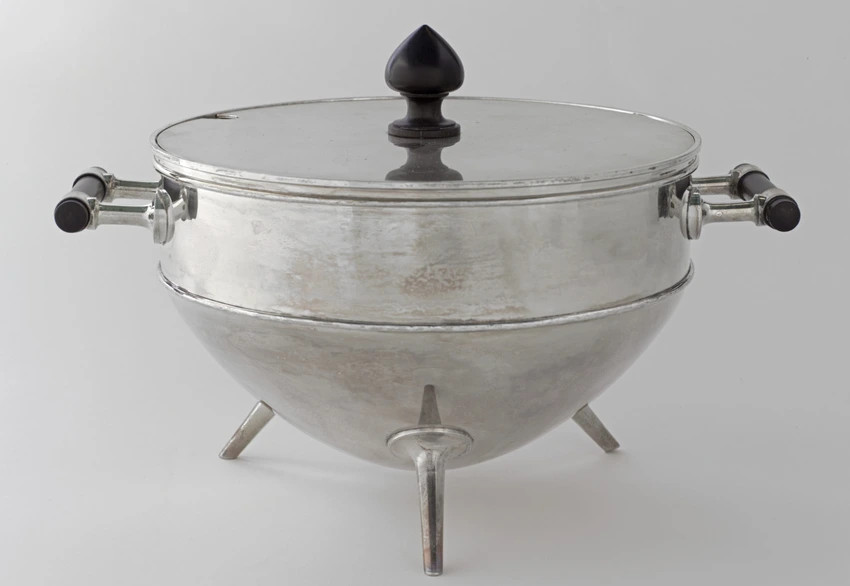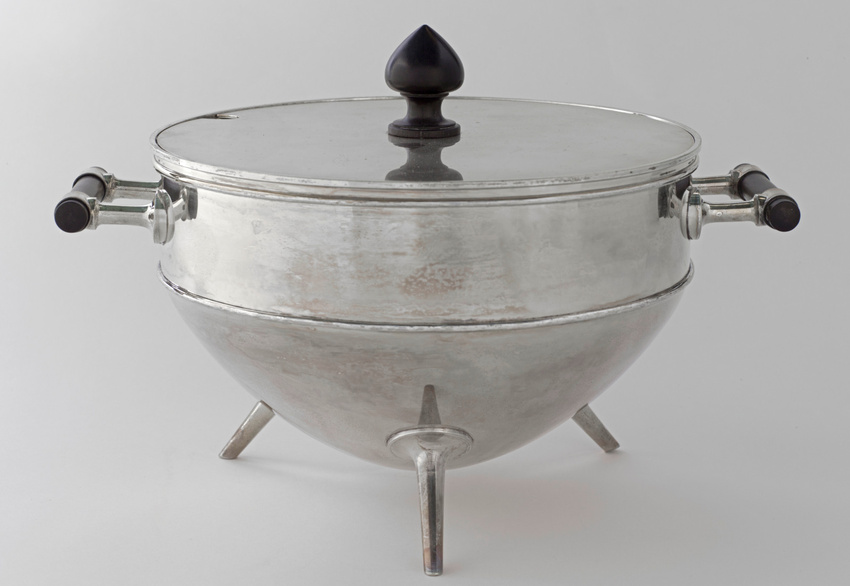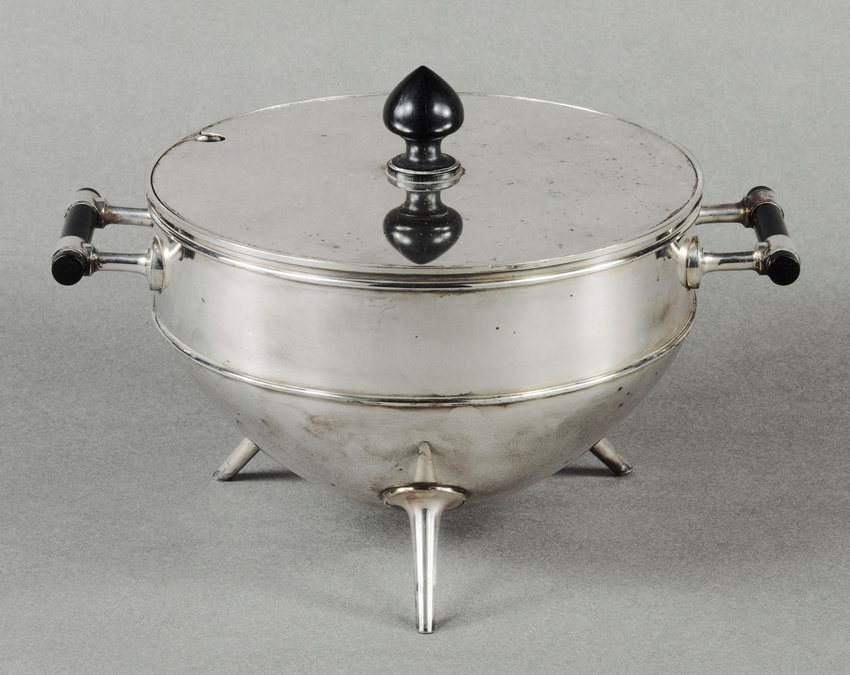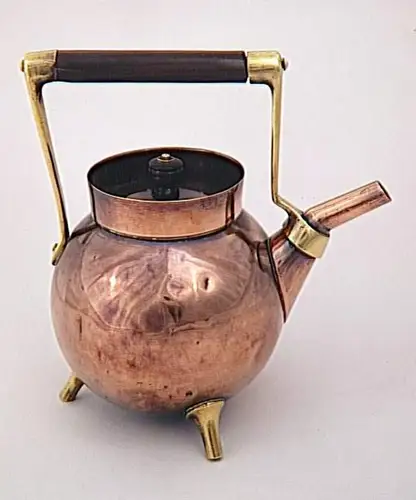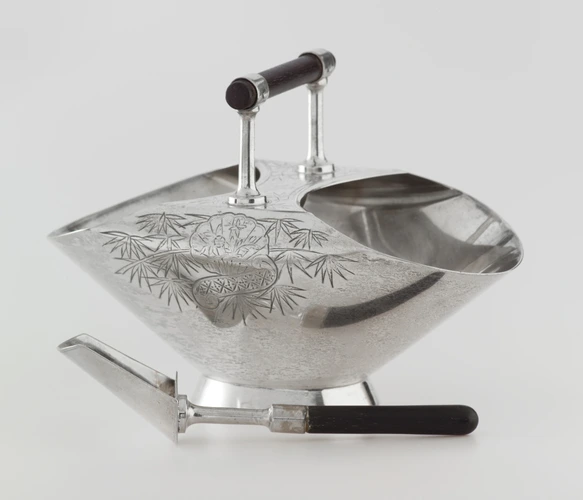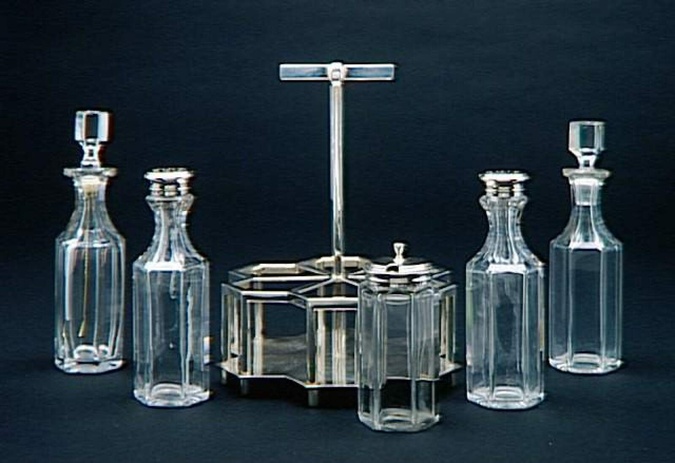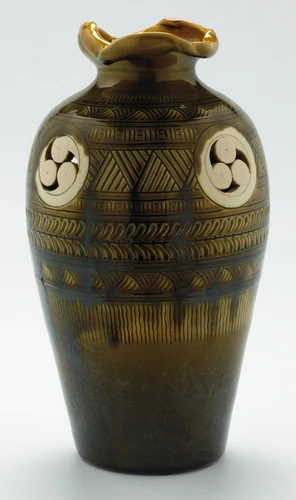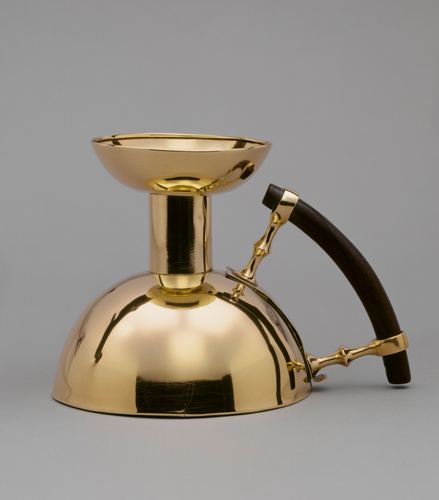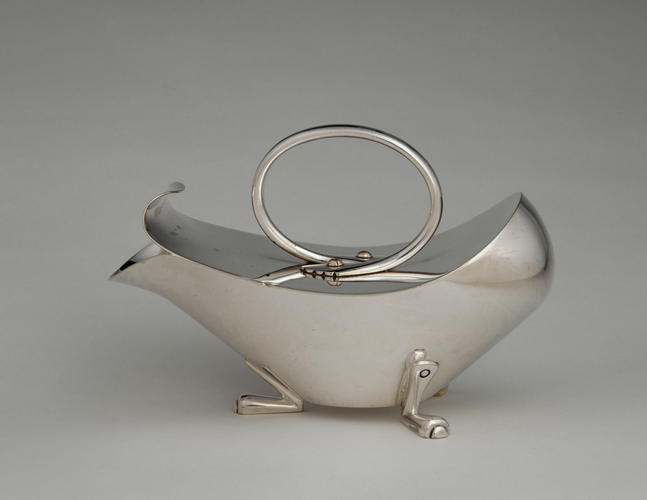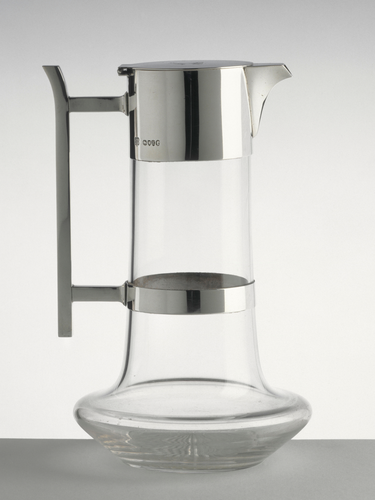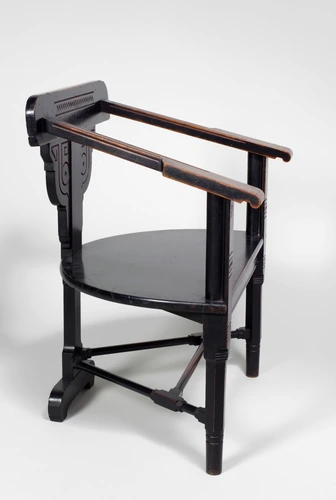Soupière
The importance of the Scot, Christopher Dresser, rests on his unique place among the industrial designers of the Victorian era. He was one of the artists who best understood the tremendous boost provided by industry. His enthusiasm for technical progress and his total commitment to mass production made him a champion of art applied to industry. A botanist and ornamental sculptor by training, Dresser knew how to utilise the prevailing eclecticism, freely and humorously drawing upon it to produce forms and motifs of great simplicity. He also knew how to design shapes to suit the qualities of each material.
It was certainly in metallic artwork that his work found its most synthetic expression. Extreme examples of his search for the maximum effect using the minimum of resources are the gold, silver and copper pieces that he created and reduced to strictly geometric shapes, with no place for ornamentation.
Among these everyday objects was this hemispherical soup tureen for which a patent was taken out on 28 July 1880. The smooth, brilliant metal make the vigorous simplification of the shape seem almost aggressive. This boldness, combined with attention to detail – notably in the attachment of the angular handles and the oblique feet – is perhaps also a superb tribute by Dresser to the work of Japanese artisans.
